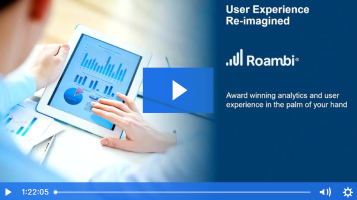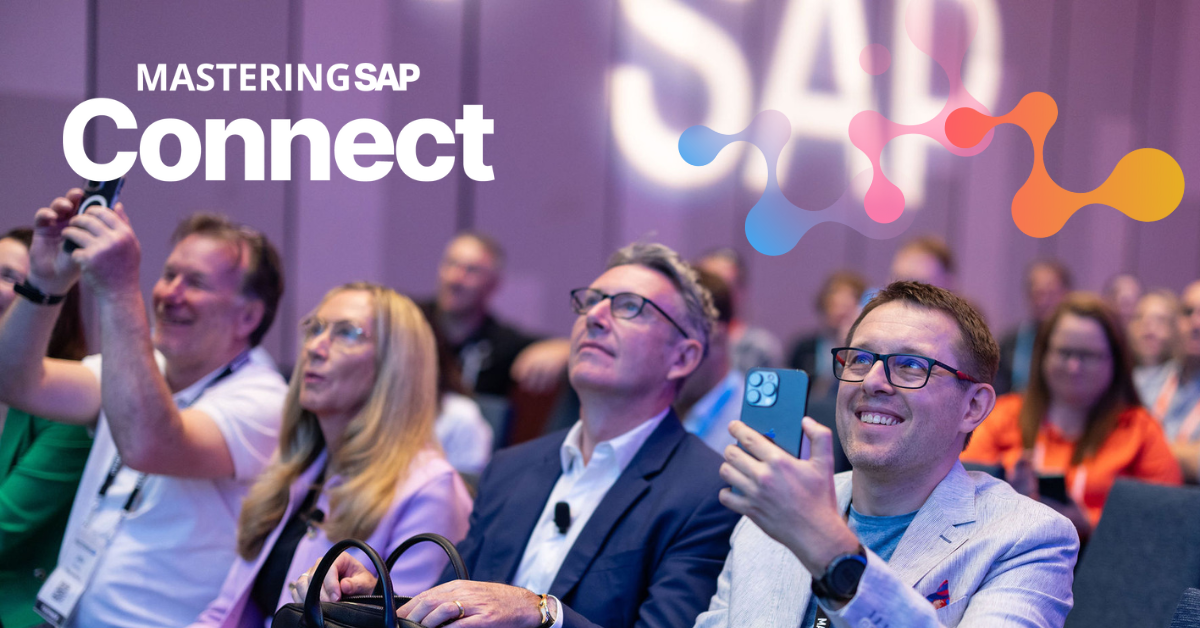Strategy Is Key for a Digital Transformation
Reading time: 9 mins
Meet the Experts
-

Chip Kleinheksel
Global SAP Chief Technology Officer - Deloitte
Key Takeaways
⇨ A cohesive strategy is crucial for any digital transformation.
⇨ Organizations must know what their main challenges and gaps are before starting.
⇨ Working with a proven strategic partner can help avoid common pitfalls.
Before diving headfirst into any major technological undertaking – such as a move to the cloud or overall digital transformation – companies must ensure they have a robust and well thought out business strategy.
Enterprises must have a roadmap of what they want to accomplish, how they want to accomplish it, the key stakeholders that need to be involved in the journey, and what technological solutions might take them where they want to go.
Part of implementing a successful digital transformation strategy is staying on top of market trends to ensure that users have access to the most up to date solutions, as well as those that may be just around the corner.
There is no true one size fits all solution when it comes to digital transformation. Each enterprise has different strategic needs based on their industry, location, talent, financial footing, and myriad other factors at play when deciding the best path forward.
Before diving head first into any major technological undertaking such as a move to the cloud or overall digital transformation, companies must make sure they have a robust and well-thought-out business strategy.
Enterprises must have a roadmap of what they want to accomplish, how they want to accomplish it, the key stakeholders who need to be involved on the journey and what technological solutions might take them where they want to go.
Market Trends
Explore related questions
Part of implementing a successful digital transformation strategy is staying on top of market trends to ensure that users have access to the most up-to-date solutions, as well as those that may be just around the corner.
Deloitte stays on the cutting edge of market trends by working with companies throughout their digital transformation journeys spanning ERP, analytics, infrastructure and innovative capabilities.
“We’re seeing companies often starting off with cloud from an infrastructure standpoint. There has been a significant movement of companies going from legacy ERP systems to Cloud ERP, either private or public cloud. That said, they’re then quickly branching into secondary use cases around innovation,” said Chip Kleinheksel, Deloitte’s Global and US CTO for SAP offering.
This trend has also increased the drive and consumption of so-called cloud platforms such as SAP, AWS Cloud Platform, and Google Cloud Platform. As companies gain confidence in the cloud infrastructure they’re seeing at their ERP through consistent use, they will begin to feel confident to start expanding to analytics, machine learning and artificial intelligence capabilities. These new abilities that come with the cloud platforms can be used to complement their ERP and unlock whole new suites of technological functionality.
More and more, companies are seeking solutions that allow them to be agile and nimble, and help them maintain a clean core. Businesses want enhanced scalability while limiting technical debt and simplifying their infrastructures so they are better able to take advantage of what SAP and the cloud hyperscalers can provide them.
Partnering with Deloitte
A successful digital transformation strategy requires a full view of all aspects of a business before settling on the appropriate solutions.
SAPinsider spoke with Chip Kleinheksel about the need for robust strategies and a thorough planning stage in any major technological overhaul, particularly a digital transformation as companies move to the cloud and utilize SAP S/4HANA.
Kleinheksel said, “Our approach is to focus first on what the business strategy is, whether there is one defined and if the IT strategy can enable it through ERP, cloud, and analytics capabilities. Further, when looking at cloud in relation to SAP, it’s important to not just focus on SAP cloud infrastructure but on the overall cloud strategy and cloud transformation you are looking to do. If you are on a cloud journey, it is likely there are a number of non-SAP applications in the landscape. An inclusive approach considering what you are doing with each of those and how they are integrating is needed as well.”
These insights are only valuable to the extent that companies are able to implement and execute them. Fortunately, Deloitte has a broad network of skilled technological practitioners who are able to bring the plans to fruition, implementing them with high quality and low risk.
As the evolution to cloud ERP continues to drive forward, the ability to hire the talent to enact the necessary steps with skills across SAP applications, cloud technologies and analytics capabilities may become more challenging. Deloitte offers a vast network of trained professionals to support strategic planning of a digital transformation, the execution, and operations support. That allows companies to leverage knowledgeable talent to partner with and complement existing business and IT team members while also reducing needs for incremental hires.
A Seat at the Table
One common mistake in digital transformation journeys is that the strategy is led by either business or IT leadership. Both teams need to have a seat at the table and be in lockstep so their voices are heard. That can also lead to collaboration that makes the overall project run more smoothly.
“IT organizations may be aware of capabilities the business side does not know about and can thus help them,” Kleinheksel said. “So it can’t just be business leading it and then saying, ‘Okay, IT, this is what we need you to do.’ IT leadership has to be sitting there because the ideas and capabilities they’re going to bring forward may be something beyond what the business has even pictured or imagined.”
Talent and Training
While strategizing for a major digital transformation is always a key first step, all that planning will account for nothing unless you have the human potential to actually put it into practice. It is important to have talent in your organization who are capable of leveraging and driving analytics solutions off of emerging technologies such as AI, automation and machine learning.
“End users used to just follow a process and execute,” Kleinheksel said. “Now they’re being provided much more data, more information, more analytics and insights. Your end users now have to have and develop a bit more of an analytic side to them versus just an execution side.”
Without leaning into the new insights they can access through a digital transformation, businesses could be neglecting huge potential benefits.
Kleinheksel added, “If you’re providing all this data and these insights but they aren’t apt to leverage them in terms of how they execute in their day to day, you’re not going to see a lot of change. You’re just going to continue to see them execute the process they had, and they’re not going to leverage the analytics provided to them to make better decisions on a day to day basis.”
Supply Chain Resilience
One of the most significant issues facing many businesses is supply chain. Recent unprecedented disruptions have sent shockwaves throughout nearly all industries and countries around the world. Companies now must reckon with the possibility that such disruptions could reemerge.
“There’s a dependency on suppliers and third parties, so you need to be aware of and mitigate the risks,” said Kleinheksel. “Do they have any potential failures you need to be mindful of so you can quickly pivot to be able to support your business? Additionally, there may be consumer demand spikes that may be unforeseen or that you may not be tracking.”
Making the necessary improvements to deal with ongoing supply chain disruptions may offer the following opportunities for improvements utilizing cloud capabilities:
- Better analytics: The cloud allows for superior analytics capabilities since it lets companies bring in data from both internal and external sources. They can then store all that data in a cost-effective way and also run the necessary analytics and use capabilities such as artificial intelligence, algorithms and machine learning to be able to provide better insights.
- More transparency: If one of your suppliers has a challenge, whether it is difficulty getting a product out or being on the brink of financial collapse, you can quickly pivot in a more proactive nature than responding to an issue and then be down and without product for months.
In addition to capabilities for implementing SAP Integrated Business Planning (IBP), Deloitte has created complementary capabilities on SAP BTP that can help businesses anticipate bottlenecks in the supply chain, find potential alternatives if a supplier is unable to function and help enterprises come up with a response that keeps them up and running. IBP works in concert with other SAP applications to maximize intelligent workflow.
Kleinheksel explained, “It’s this intersection of these applications—IBP, Ariba, as well as S/4HANA— complemented with BTP, which provides not only the integration capabilities to weave these applications together but also combine the innovation platform with integrated data for better insights and analytics.”
Investment
Companies may wonder if they can afford some of these tools and services. But in many cases, the real question is if companies can afford not to invest in them.
“In the world we live in right now,” Kleinheksel said, “if companies aren’t looking to have a more resilient supply chain and aren’t looking to have better predictive analytics around what’s going on with their suppliers, as well as what’s going on with their demand, they’re going to be in a pinch. There’s an immediate need there.”
There are two main areas—cost reduction and risk avoidance—where Deloitte provides a leg up for companies that may have previously sought to make a major supply chain transformation on its own.
- Cost reduction: Better analytics provide the necessary information to make better supply chain decisions. That applies to aspects such as centralizing distribution to where you have your largest customer base and are able to have better inventory levels based on improved demand and supply planning. That can help reduce cost overall, which will make a big impact on the bottom line.
- Risk avoidance: Being able to proactively monitor and assess how suppliers are doing can help companies find and avoid potential issues. Proactive monitoring gives businesses the necessary time to pivot to new solutions and manage that risk appropriately. That can help avoid interruptions to sales growth. Risk avoidance may not be able to correlate to an exact quantitative dollar sign as is possible at the cost reduction side, but at a minimum, users can come up 50 SAPinsider Magazine with some type of qualitative metric that indicates the value of risk avoidance.
Timeline
Often, a major impediment to embarking on a digital transformation journey is the timeline. Business leaders are often hesitant to sink more than a year into a significant project that requires thousands of working hours before any tangible or noticeable results are achieved.
With the help of Deloitte, many of these projects can provide real impact within months, not years. This agility provides a business case for initial time investment in major digital transformation projects, as well as allowing the business to harness some of the capabilities that had previously been just out of reach.
“When you think about some of the dashboard analytics capabilities you can leverage in BTP, the data’s all there. If you’re able to tap into that data and create a dashboard, we’re talking not even a couple months to create some of these things, be able to test them and have those insights at your fingertips,” Kleinheksel said.
Sustainability
The conversation around sustainability is growing, and more companies are strategizing and executing plans. Enterprises would be wise to incorporate plans for sustainability into any major undertakings they have on the docket, which means not just the regulations around sustainability that exist now but also the ones likely to be in the very near future.
According to Kleinheksel, visibility and collaboration are key for maximizing sustainability while parallel companies can look to optimize financial impact.
To achieve visibility and the transparency desired, companies must clearly define their initiatives and have clarity of the policies in every geographical location where they operate. With that in mind, they can define the steering and reporting capabilities necessary and the underlying technology needed to do so. The technology, however, hinges on data. It is crucial to understand the data you have, the data that comes from third parties and where you have gaps requiring action to gather and support. The end result provides the ability to actively monitor and act based on insights gathered to make business decisions that are sound from a sustainability perspective.
Collaboration also plays a key part in the broader push for sustainability, not just internally but also externally. Companies must understand internal sustainability policies and requirements, as well as the requirements they have of their suppliers and other partners. That way, they can drive any sustainability decisions or actions they need them to be taking.
Finally, sustainability doesn’t have to result in a negative financial impact. Leading organizations are finding ways to make sustainability profitable. They are strategic in acquiring green funding, applying for relevant grants and working through tax regulations. Deloitte has all these capabilities to support clients as they navigate.
Conclusion
Laying out a clear, cohesive strategy is an essential first step in an organization’s digital transformation journey. Companies need to observe market trends and plan for any shifts in regulation to ensure operations can continue to move smoothly.
Working with a partner such as Deloitte allows organizations to obtain a high-level overview of their business processes, how those processes can be improved and the technological solutions that can help them achieve the goals they set.
Deloitte can help ensure that these changes are not just made but done in a timeline that allows a business to flourish without costly interruptions or delays.





